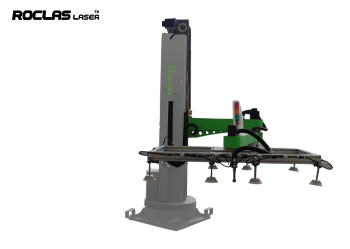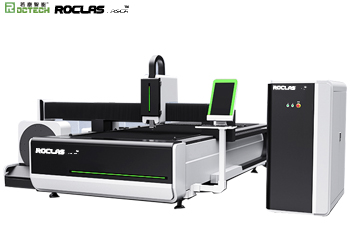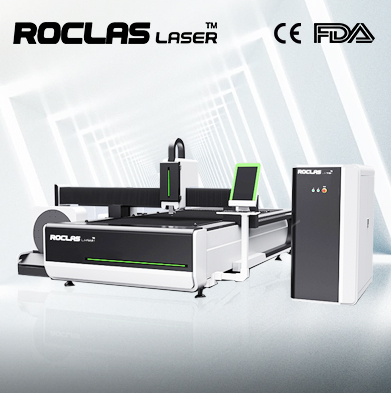소개
레이저 기계는 재료 가공에서 정밀도, 효율, 다기능성을 제공함으로써 각 업계를 완전히 변화시켰다.레이저 기계는 절단 및 조각에서 용접 및 마커에 이르기까지 제조업, 의료, 심지어 예술에서 없어서는 안 될 도구가되었습니다. 이 포괄적인 가이드는 다양한 유형의 레이저 기계, 그들의 응용 및 이 동적 영역의 미래 추세를 심도 있게 다룹니다.
레이저 기계의 유형

1. CO2 레이저 기계

CO2 레이저 기계는 특히 조각 및 절단 응용에서 가장 많이 사용되는 유형 중 하나입니다.그들은 주로 이산화탄소인 가스 혼합물을 이용하여 레이저빔을 생성한다.이 기계들은 목재, 아크릴, 유리, 방직품 등 비금속 재료에 매우 효과적이다.그들의 다기능성과 비교적 낮은 원가는 그들로 하여금 표지판으로부터 류행에 이르기까지 여러 업종에서 환영을 받게 했다.

2. 섬유 레이저 기계
광섬유 레이저는 특히 금속 가공 분야에서 고효율과 고정밀도로 유명합니다.그들은 고체 레이저 소스를 사용하는데, 그 중 활성 매체는 희토류 원소 (예: 铒 또는 이테르테르) 가 섞인 광섬유이다.파이버 레이저는 강철, 알루미늄, 구리를 포함한 금속을 절단, 용접 및 표시하는 데 이상적입니다.컴팩트한 디자인과 낮은 유지 보수 요구 사항으로 인해 자동차 및 항공 우주 업계에서 가장 선호하는 제품입니다.
3.Nd:YAG 및 Nd:YVO4 레이저 기계
네오디뮴을 섞은 알루미늄 가넷 (Nd:YAG) 과 네오디뮴을 섞은 바나듐산이트륨 (Nd:YVO4) 레이저는 의료 절차, 재료 가공 및 과학 연구를 포함한 다양한 응용에 사용되는 고체 레이저입니다.이러한 레이저는 금속 및 세라믹을 절단, 용접 및 드릴하는 데 사용되는 고출력 응용에 특히 효과적입니다.
4. 다이오드 레이저
Diode lasers are semiconductor-based lasers that are compact, energy-efficient, and cost-effective. They are commonly used in applications such as barcode scanning, laser printing, and medical treatments. Diode lasers are also finding increasing use in material processing, particularly in low-power cutting and engraving tasks.
Applications of Laser Machines
1. Manufacturing and Industrial Applications
Laser machines have become integral to modern manufacturing processes. They are used for cutting, welding, engraving, and marking a wide range of materials. In the automotive industry, laser welding ensures strong and precise joints, while laser cutting is used for intricate metal parts. In electronics, lasers are employed for micro-machining and PCB (Printed Circuit Board) manufacturing.
2. Medical and Healthcare Applications
The medical field has embraced laser technology for its precision and minimally invasive capabilities. Lasers are used in surgeries, dermatology, ophthalmology, and dentistry. For instance, laser eye surgery (LASIK) has become a popular method for correcting vision, while laser ablation is used for removing tumors and treating various skin conditions.
3. Art and Design
Artists and designers have found laser machines to be invaluable tools for creating intricate and detailed works. Laser engraving and cutting allow for precise and repeatable designs on materials such as wood, acrylic, and leather. This technology has opened up new possibilities in custom jewelry, architectural models, and personalized gifts.
4. Aerospace and Defense
The aerospace and defense industries demand high precision and reliability, making laser machines a natural fit. Lasers are used for cutting and welding complex components, as well as for marking and engraving parts for traceability. The ability to work with high-strength materials like titanium and composites is particularly important in these sectors.
5. Research and Development
Laser machines play a crucial role in scientific research and development. They are used in spectroscopy, microscopy, and material analysis. Lasers are also employed in experimental setups for studying fundamental physical phenomena, such as quantum mechanics and plasma physics.
Future Trends in Laser Technology
1. Increased Automation and Integration
The future of laser machines lies in increased automation and integration with other manufacturing processes. Smart factories are adopting laser machines that can communicate with other equipment, enabling seamless production lines. Advanced software and AI-driven systems are being developed to optimize laser parameters in real-time, improving efficiency and reducing waste.
2. Miniaturization and Portability
As technology advances, laser machines are becoming more compact and portable. This trend is particularly evident in medical and field applications, where portable laser devices can be used for on-site treatments and repairs. Miniaturized lasers are also being integrated into consumer electronics, such as smartphones and wearable devices.
3. Enhanced Precision and Power
Ongoing research is focused on developing lasers with higher precision and power. Ultrafast lasers, which operate in the femtosecond and attosecond range, are enabling new applications in micromachining and medical procedures. High-power lasers are being developed for industrial applications, such as thick metal cutting and deep welding.
4. Sustainable and Eco-Friendly Lasers
Sustainability is becoming a key consideration in the development of laser machines. Efforts are being made to reduce the energy consumption and environmental impact of lasers. This includes the use of renewable energy sources, recyclable materials, and eco-friendly cooling systems. Additionally, lasers are being used in environmental applications, such as pollution monitoring and waste management.
5. Expansion into New Materials and Applications
The versatility of laser machines is driving their expansion into new materials and applications. For example, lasers are being used to process advanced materials like graphene and carbon nanotubes, which have unique properties and potential applications in electronics and energy storage. Lasers are also being explored for use in 3D printing, where they can enable the precise deposition of materials for complex structures.
Conclusion
Laser machines have come a long way since their inception, evolving into powerful and versatile tools that are transforming industries and enabling new possibilities. From CO2 and fiber lasers to diode and solid-state lasers, each type offers unique advantages for specific applications. As technology continues to advance, we can expect to see even greater precision, efficiency, and sustainability in laser machines. Whether in manufacturing, healthcare, art, or research, lasers are poised to play an increasingly important role in shaping the future.
일반적인 조언이나 특정 지원이 필요하든 상관없이, 우리는 당신을 도와드릴 것입니다.